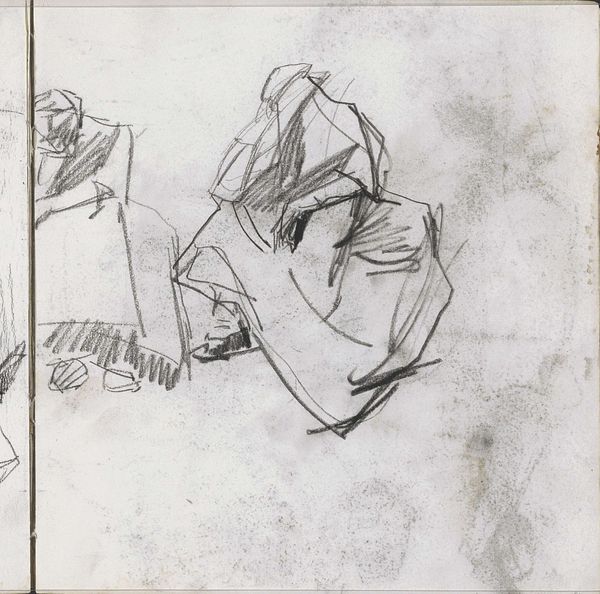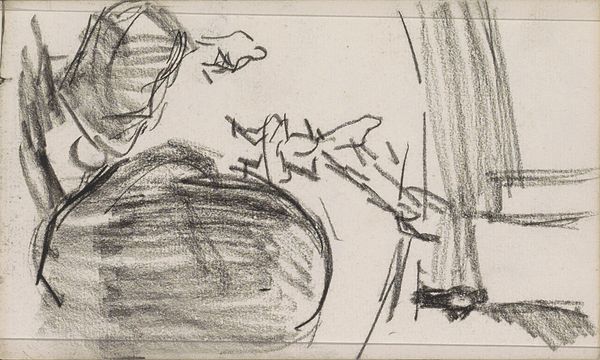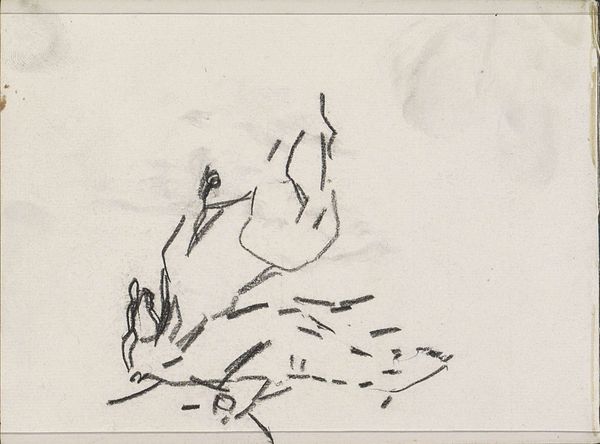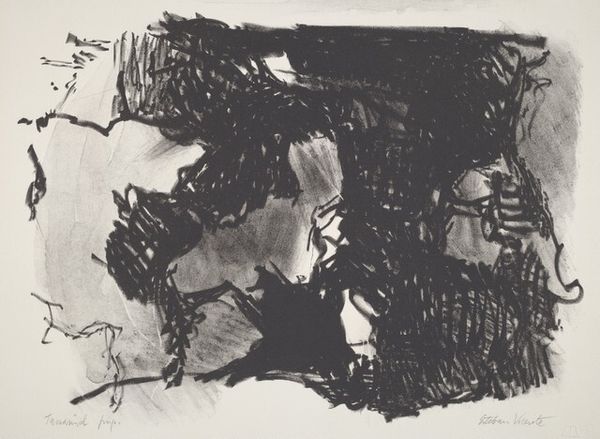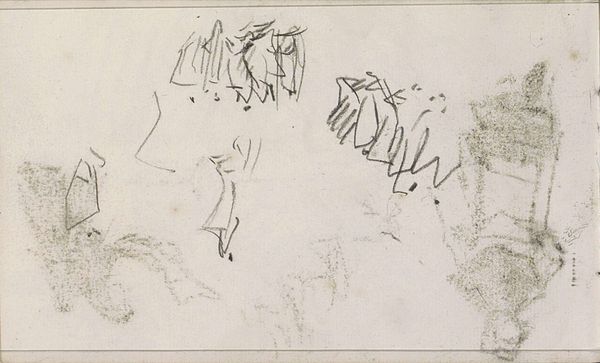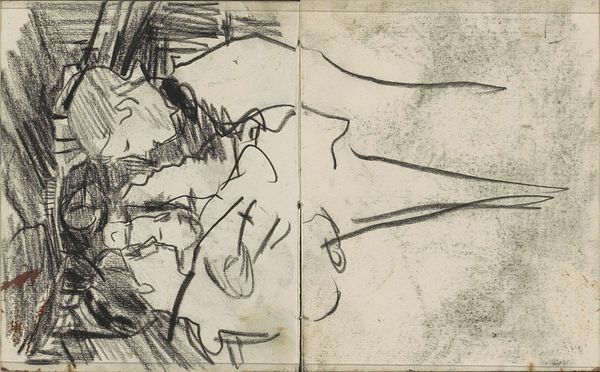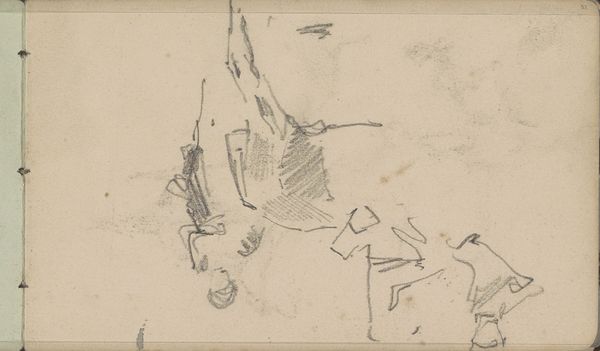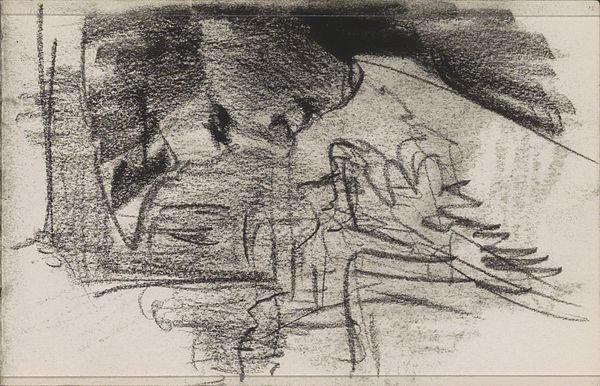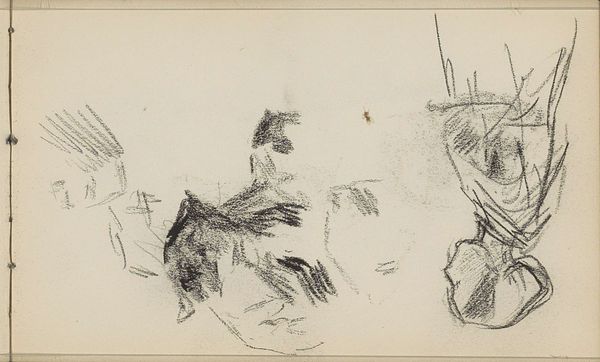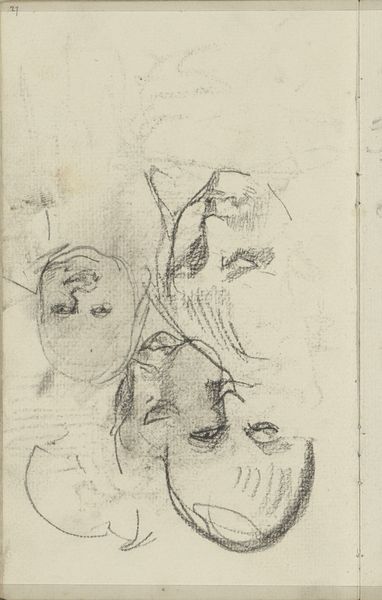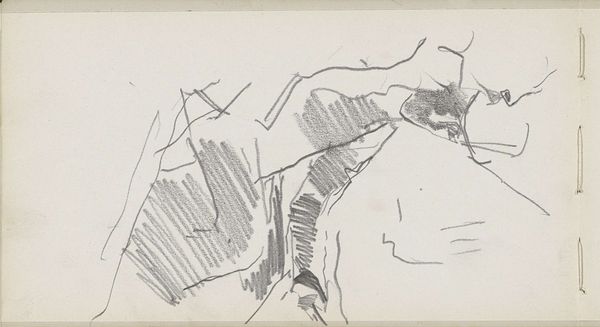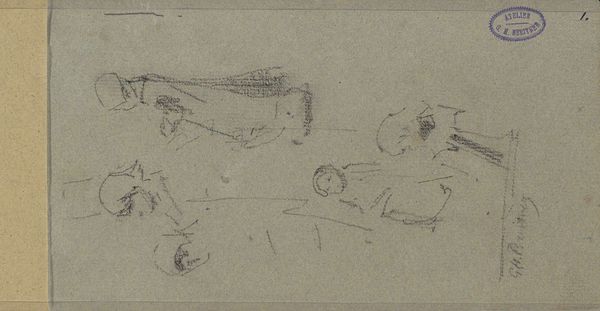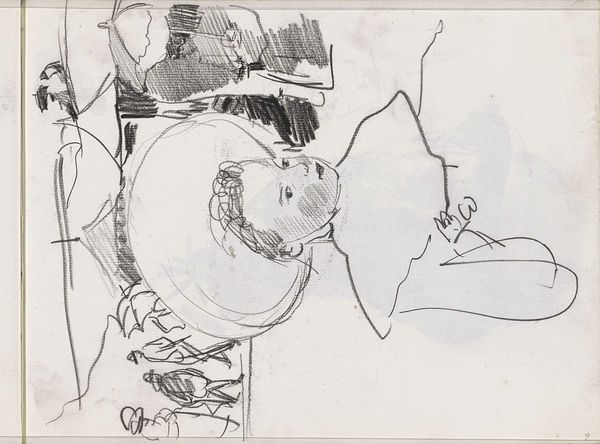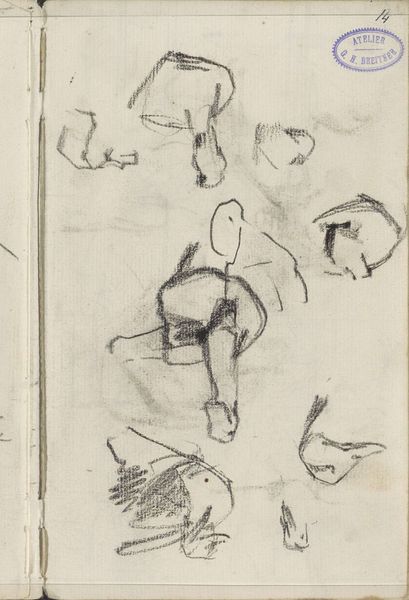
Copyright: Rijks Museum: Open Domain
Editor: Here we have Isaac Israels' "Paarden," a graphite drawing from between 1875 and 1934. It looks almost unfinished, just quick lines suggesting the forms of horses. What do you see in this piece? Curator: The incomplete nature is key. Think about what the horse has meant across cultures – nobility, power, freedom, even death. These sketched lines, capturing a momentary impression of the animals, remind us that such potent symbols are always in flux, always being redefined. What aspects strike you most? Editor: I'm intrigued by how little detail there is, yet I still get a sense of movement. Curator: Precisely! That’s the power of suggestion. Israels taps into our pre-existing knowledge, our inherited understanding of “horse,” and allows us to complete the image. Each viewer carries a memory, a cultural weight, that informs their understanding. Do you think the absence of background detail adds to this? Editor: Definitely. It's like they exist outside of any specific time or place, almost archetypal. So the image’s meaning shifts, then, based on the viewer's cultural background? Curator: Exactly. For someone with no experience of horses, the drawing might convey only abstract shapes, lacking that connection to the deeper symbolism. But for others, these simple lines trigger a wealth of associations and emotions that are anything but abstract. Editor: That’s a completely different way to think about a drawing, to see how symbols and collective memories impact how the art work communicates meaning. Curator: Indeed. And that interaction—between the artwork, cultural memory, and the viewer—is where much of the art’s power resides. I'm leaving with an exciting new perspective on realism itself.
Comments
No comments
Be the first to comment and join the conversation on the ultimate creative platform.
